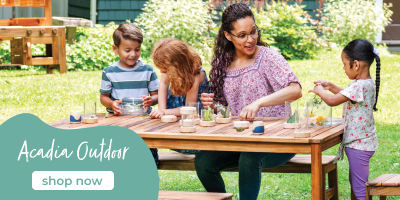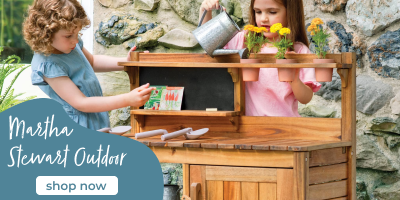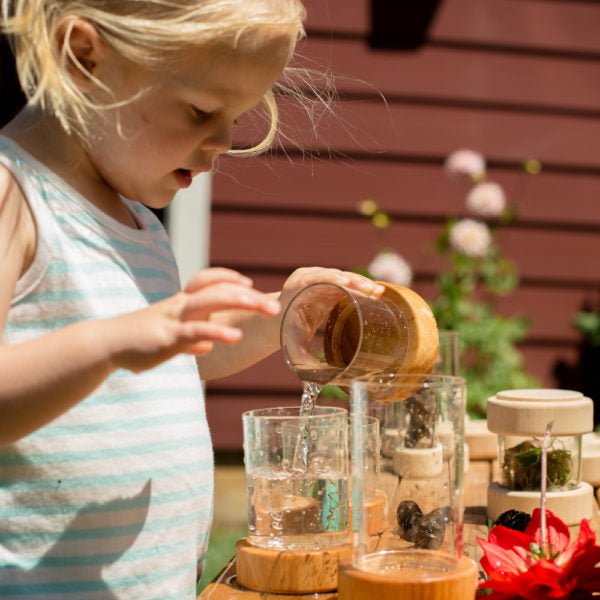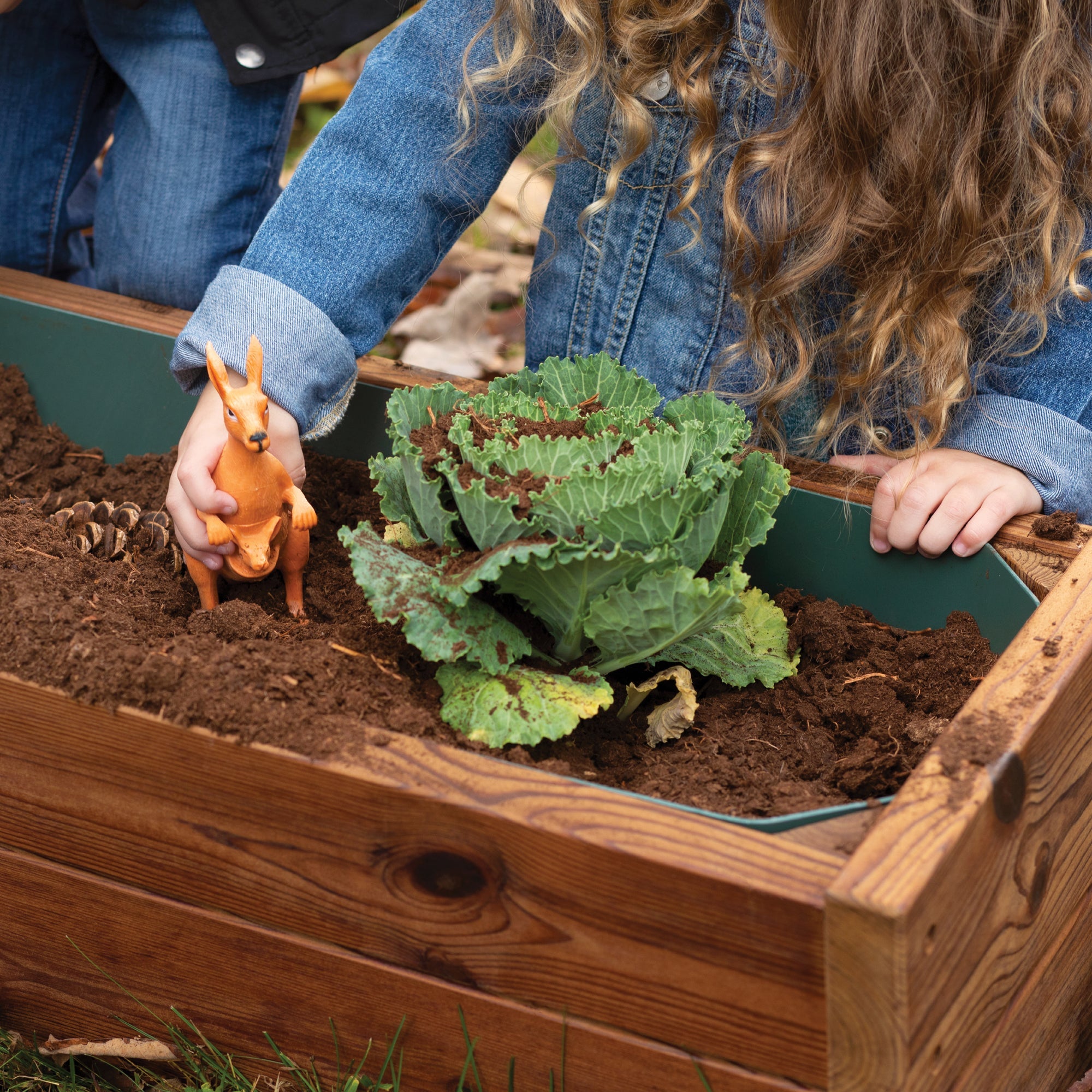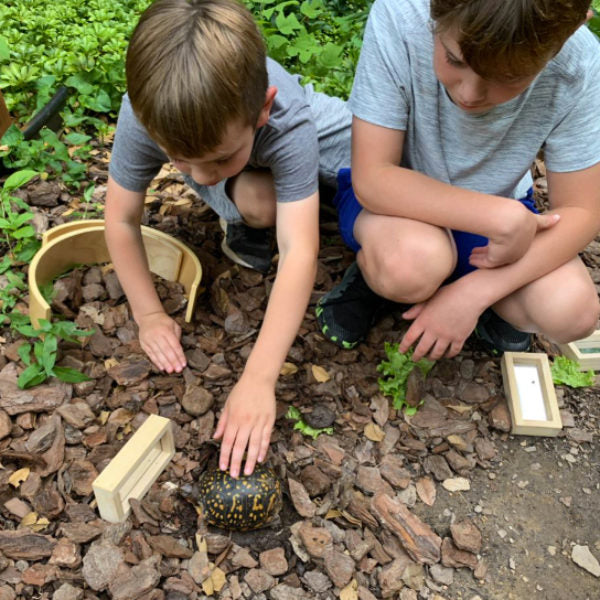Learning with Nature: The Power of Silence

The world is so noisy! There are dings of email alerts, cars, air conditioners running, lawnmowers, garbage trucks—the list goes on. Metaphorically we’re also surrounded by noise through all of the information and news reports on television, social media, radio, and more.
This human-made noise is stressful to our bodies and minds. If you’re like me, there are times where you just want to hit the mute button on the world. Fortunately, nature offers a space free from human-made noises that’s calming to our bodies and minds!
During the pandemic shutdowns, people in cities commented about how loud the birds were. Of course, the birds weren’t any louder than normal, we had just finally silenced the human noises enough to listen. But we don’t have to wait for a global crisis to quiet the human noises!
You may be thinking, “But young children are rarely quiet.” Ha! It’s true, their play is often noisy. So, is it even possible to have silence with young children? Unequivocally yes!
We can remember, when children are in play, to sometimes just observe and not ask questions of them all the time. Yes, it is still important to ask children meaningful open-ended questions, but occasionally you should just observe or play alongside them. It’s like any conversation—a bit of silence allows for a new thought or idea to emerge.

I was on a walk with a 5-year-old recently at the edge of a woods. Neither of us had spoken for about a minute. Suddenly she started cawing like a crow. I turned to see her facing the other side of the field, where there was a crow perched in the top of a tree. I just stood silent and listened as several times she paused for the crow to call, and then returned the call.
Silence allowed her to hear the crow in the first place. I didn’t have to prompt her to notice the natural world, but rather I had to leave space for nature to provide a moment of learning. This is what I mean by learning with nature—where the natural world becomes another teacher outside of any plans I may have had for the day.
Another strategy for encouraging silence is to model your own observations during lulls in conversation. For example, statements such as, “Wow, it’s really quiet out here,” or, “That blue jay is really loud this afternoon,” followed by a return to silence will allow the child to notice and choose what happens next. They may respond, comment with a different idea, or continue to remain silent. Either way you’ve modeled that you’re noticing the sounds around you.
With some young children lulls in conversation are hard to find, but animals are a great way to disrupt that conversation for a bit of silence. Imagine a bird lands in a nearby tree. A hand up, slight crouch, and whispering, “Look at that chickadee on the branch,” can immediately draw a child’s attention to the bird in front of them. Depending on the bird’s behavior and the child’s interest, this silent observation might continue for several minutes.
A final strategy for leveraging silence in children’s nature-based learning is to encourage them to sit quietly in one place. Ideally this would happen spontaneously, such as the animal observation above. Or maybe the child sits down on the beach to draw in the sand. Sit by them and pose a thought like, “I wonder what we’d notice if we sat here quietly for 5 minutes.” Gauge their interest in the idea and respond accordingly. If the child seems to really enjoy it maybe suggest another quiet time like that in the same spot the next day. Slowly the child may start to build a relationship with the routine and that particular place.
Children (and adults!) need moments of quiet away from the noise of the adult-built world. It brings us calm and serenity, as well as attention and wonder to the world around us.












